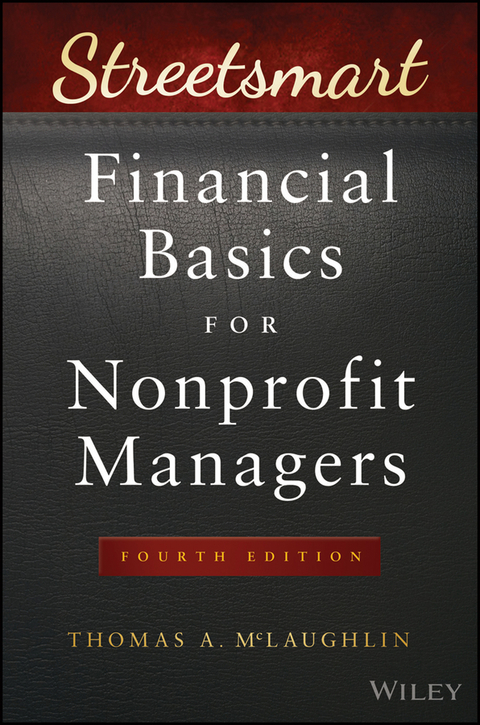Description
Efnisyfirlit
- Title Page
- Copyright
- Dedication
- Preface
- Acknowledgments
- Note to Reader
- Part One: Analysis
- Chapter 1: Structure of Nonprofit Organizations
- Corporations
- Programs
- Hybrid Corporations
- Loss of Tax-Exempt Status: The Monster Within
- Chapter 2: Mission: Managing Your Two Bottom Lines
- The Role of a Value System
- The Nonprofit’s Dilemma and How to Solve It
- Chapter 3: Accounting as a Second Language: A Nine-Point Program
- The Entity Principle
- Money Measurement
- Conservatism Principle
- The Cost Concept
- The Materiality Principle
- Going Concern
- Dual Aspect
- Realization Principle
- Matching Principle
- Chapter 4: Assets Are for Boards, Activities Are for Managers
- Concepts Versus Details
- Boards Invest, Managers Spend
- If It Has to Be Decided Today, It’s Probably the Wrong Question
- Boards Own the Controls, Managers Implement Them
- Chapter 5: Balance Sheets: How They Get That Way
- Current Assets (from IRS Form 990, page 11)
- Noncurrent Assets
- Current Liabilities
- Noncurrent Liabilities
- Making the Balance Sheet Dance
- Transparency, Thy Name Is IRS Form 990
- What to Do
- Chapter 6: Financial Analysis: A Few Analytical Tools
- Financial Statement Analysis for Math Phobics
- Current Ratio
- Days’ Cash
- Days’ Receivables
- Cash Flow to Total Debt
- Debt to Net Assets
- Operating Margin
- Accounting Age of Plant/Equipment (or Land, Buildings, and Equipment)
- A Footnote
- Chapter 7: Beyond the C3: Alternate Corporate Structures
- Commonly Available Structures
- Part Two: Accounting
- Chapter 8: Nonprofit Accounting: Acknowledging the Strings Attached
- Net Asset Categories
- Other Provisions
- What It All Means
- Chapter 9: Cost Accounting: How Much Does It Cost?
- A Form of Management Accounting
- Indirect Costs
- Certain Support Costs Get Assigned to Other Support Costs
- Breakeven Analysis—Another Use for Cost Data
- Cost Accounting versus Cost Reporting
- Chapter 10: Auditing: Choosing and Using an Auditor
- Audit, Review, and Compilation
- The Auditor Market
- Getting Value from the Audit
- Conclusion
- Part Three: Operations
- Chapter 11: Cash Is King
- Up the Balance Sheet
- How Much Cash Is Enough?
- Conclusion
- Chapter 12: Capital: Not a Four-Letter Word
- Sources of Capital
- The Mechanics of Capital Financing
- The Present Value of Money
- The Great Divide among Nonprofits
- Future Access to Capital Markets
- The Role of Net Assets
- Strategic Capital Management
- Chapter 13: Budgeting: Taming the Budget Beast
- Playing Revenues Like a Symphony
- Expenses
- Conclusion
- Chapter 14: Indirect Costs and Other Despised Items
- Rules Govern Audits, Economics Rules Budgets
- Still, It’s Low That Counts
- Secrets of the Indirect Cost Game
- Chapter 15: Managing Money-Losing Programs
- The Origin of the Problem
- Solutions
- Other Sources of Value
- Ding Ding Ding Ding Ding!
- Chapter 16: The Milestones of Spending on Overhead Costs
- Chapter 17: Pricing: How Much Should It Cost?
- Pricing Methodologies
- Going the Other Way—Contractual Adjustments and Subsidies
- Pricing Strategies
- How to Price
- Chapter 18: Profit: Why and How Much?
- Profit Defined
- Uses of Profit
- Profit—How to Get It
- What Can Be Done
- Chapter 19: To Raise More Money, Think Cows
- Donations
- Bequests—Cow to Charity
- Charitable Remainder Trusts—Milk to Beneficiaries, Cow to Charity
- Pooled Income Funds—Donors Put Their Cows in a Herd, Keep Rights to Milk
- Chapter 20: Owning a Building: What’s in It for You?
- A Three-Part Calculation
- Chapter 21: Insurance: The Maddeningly Complicated Art of Covering Your Assets
- To Insure or Self-Insure?
- Risk Management
- Captive Insurance Companies
- Quality Assurance in Disguise
- Chapter 22: Internal Controls for External Goals
- The Elements of Internal Control
- How to Monitor the System
- Maintaining the System
- Conclusion
- Chapter 23: Scrutiny Intensifies
- Some Predictions
- The Growing Industry of Charity Watching
- Chapter 24: Management Controls: Toward Accountability for Performance
- Management Controls circa 1980
- Beyond Management Controls in the Twenty-First Century: How to Do It
- Messages
- How to Prepare—Changes in the CFO Role
- It’s Called ACCOUNTING for a Reason
- Appreciate the Abrupt Change
- Frame the New Role
- Meet Your New CFO
- Part Four: Planning, Control, and Miscellaneous
- Chapter 25: Finance Is Oil, Development Is Water
- It’s All about Time
- The Fix
- Chapter 26: When Do You CFO?
- DIY
- The Financial Tasks Multiply
- Chapter 27: Business Models and Business Plans
- First the Model, Then the Plan
- How to Build Your Business Model
- What, Exactly, Is a Business Plan?
- What Is in a Business Plan (Usually…)?
- Start-Up Nonprofits
- The Restructuring Nonprofit
- New Program or Division
- Goals Drive the Plan
- Chapter 28: How to Beat the Next Recession
- Understand the Demand Pattern for Your Services
- Prepare for Reductions—in New Services
- Anticipate Foundation Behavior
- Proactively Communicate with Your Staff
- Consider Repurposing Your Reserves
- Stay Calm
- Appendix A: A Financial Management Cultural Primer
- Appendix B: Budget Bloopers
- Appendix C: Using the Website: Table of Contents with Commentary
- Part One: Analysis
- Part Two: Accounting
- Part Three: Operations
- Part Four: Planning, Control, and Miscellaneous
- Introduction
- System Requirements
- Using the Files
- User Assistance
- Index
- End User License Agreement







Reviews
There are no reviews yet.